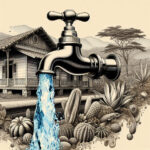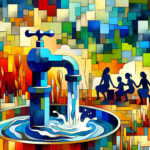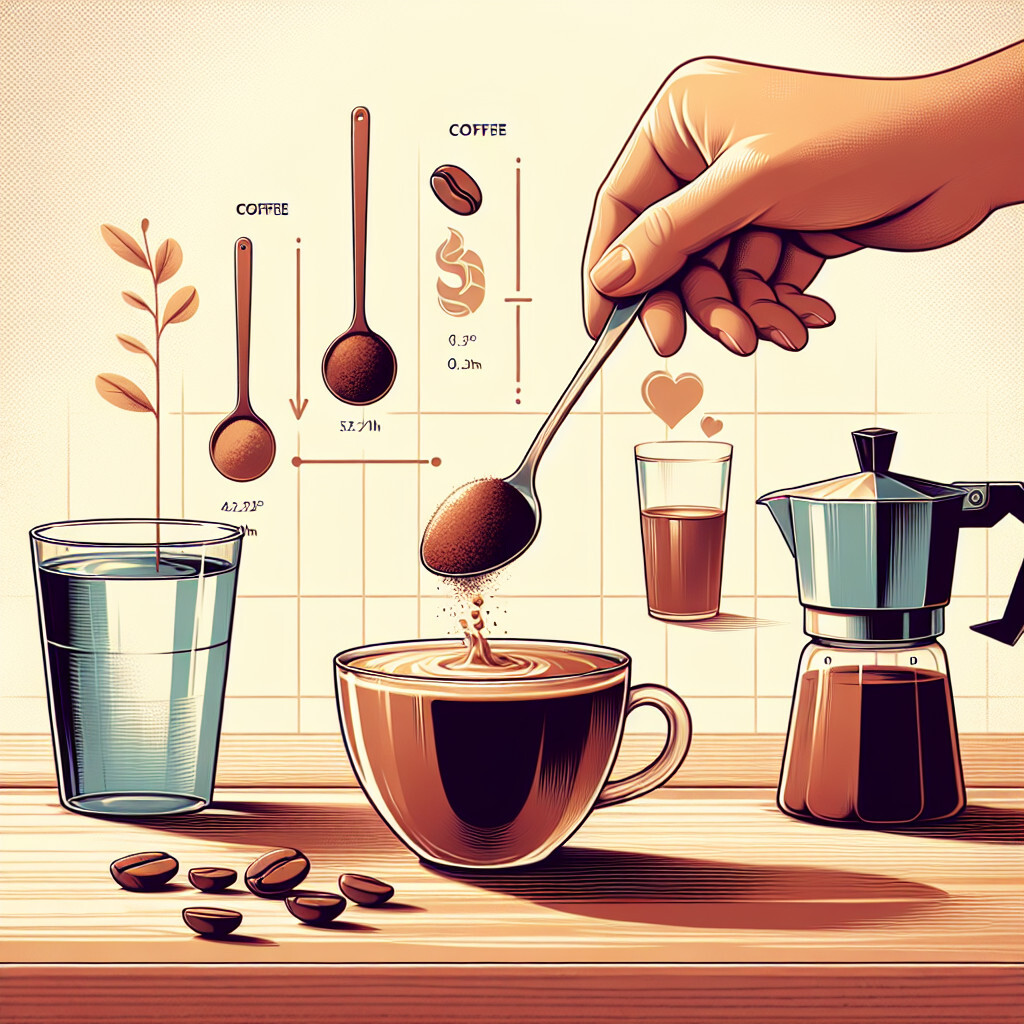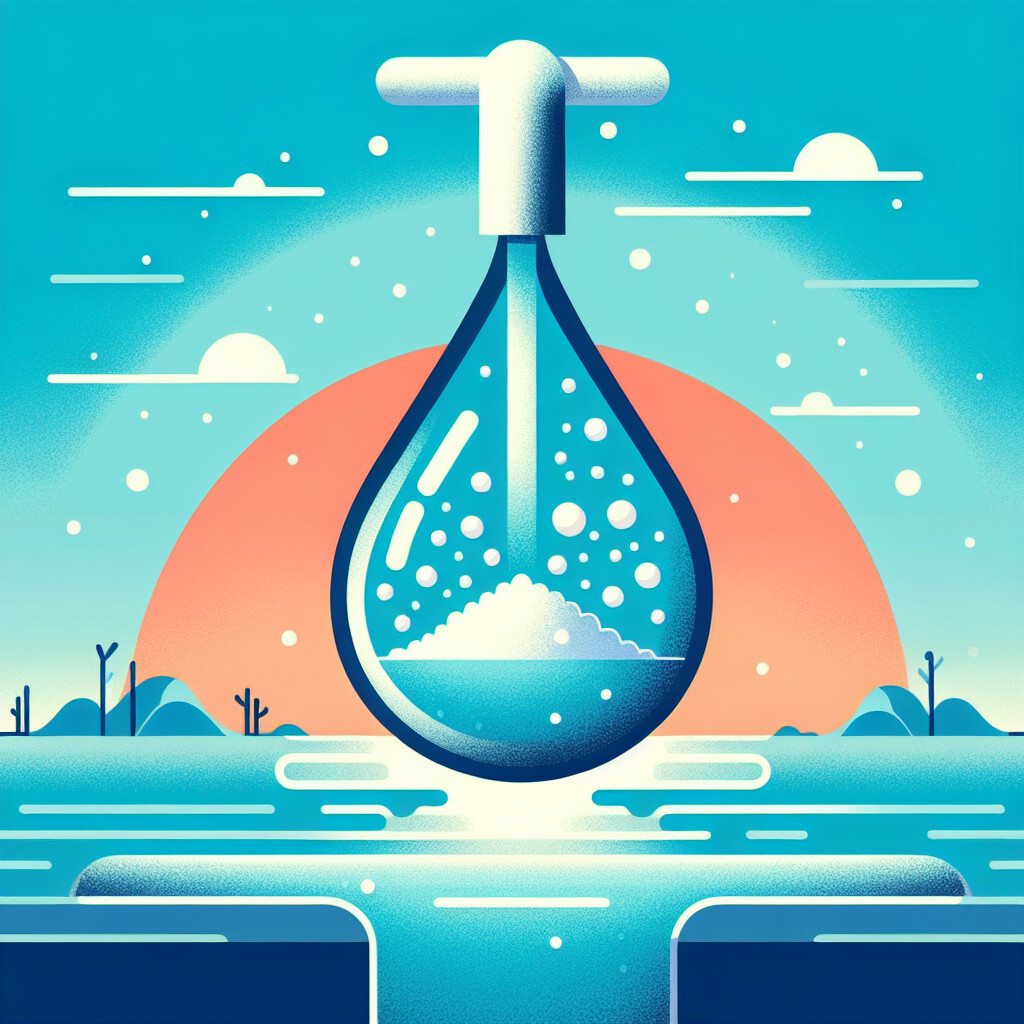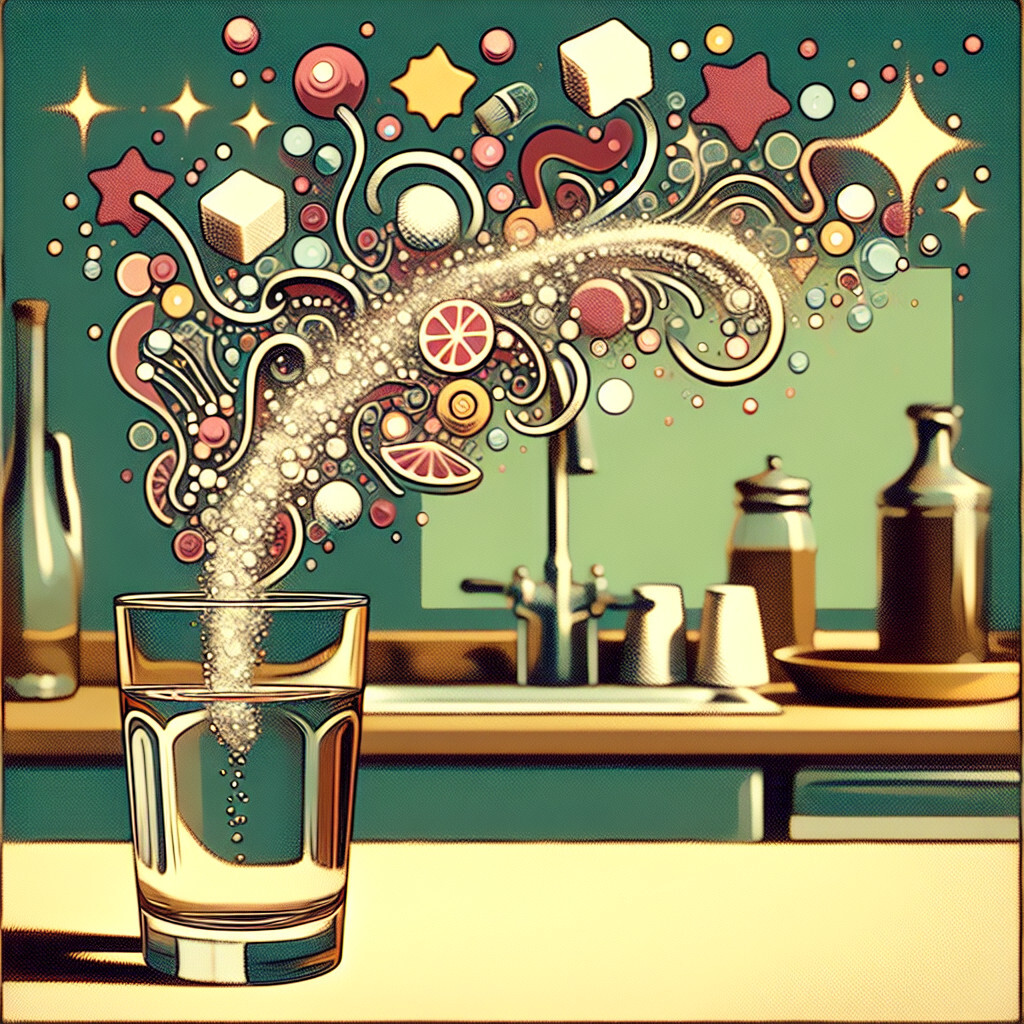-
Table of Contents
“Panama’s Tap Water: Refreshingly Safe and Drinkable!”
Introduction

Tap water in Panama is generally considered safe to drink in urban and suburban areas, as it is treated and purified according to international standards. However, the quality can vary depending on the region. In some rural areas and islands, it is recommended to drink bottled water due to potential contamination. Despite the overall safety, many locals and tourists choose to drink bottled water as a precautionary measure.
Understanding the Quality of Tap Water in Panama
Panama, a country known for its vibrant culture, lush landscapes, and the famous Panama Canal, is a popular destination for tourists and expatriates alike. However, one question that often arises among visitors and new residents is about the quality of tap water in Panama. Understanding the quality of tap water in this Central American country is crucial for health and safety reasons.
In general, the tap water in Panama City, the country’s capital, is considered safe to drink. The Instituto de Acueductos y Alcantarillados Nacionales (IDAAN), the national institute of aqueducts and sewers, is responsible for the water supply in Panama. The IDAAN adheres to strict standards to ensure the water’s safety, conducting regular tests for contaminants and bacteria. The water in Panama City is treated with chlorine to kill any harmful bacteria, making it safe for consumption.
However, while the tap water in Panama City is generally safe to drink, the same cannot be said for all areas of the country. In more rural regions and on the islands, the quality of tap water can vary significantly. In these areas, the water may not be treated to the same extent as in the city, leading to a higher risk of contamination. Therefore, it is often recommended that visitors and residents in these areas avoid drinking tap water. Instead, they should opt for bottled water or use a reliable water purification method.
Furthermore, even in areas where the tap water is deemed safe, some individuals may still experience minor gastrointestinal discomfort due to the change in water composition. This is not necessarily indicative of poor water quality, but rather a common response to unfamiliar bacteria present in the water. To avoid this, some people choose to gradually introduce tap water into their diet, allowing their bodies to adjust over time.
It’s also worth noting that the taste of tap water in Panama can differ from what many foreigners are accustomed to, primarily due to the chlorination process. Some people find the taste off-putting and prefer to drink bottled water or use a water filter to improve the taste.
In conclusion, while the tap water in Panama City is generally safe to drink, caution should be exercised in rural areas and on the islands. Regardless of where you are in the country, it’s always a good idea to stay informed about the local water quality and take necessary precautions. This could involve drinking bottled water, using a water filter, or boiling tap water. By taking these steps, you can ensure that you stay hydrated and healthy during your time in Panama.
In essence, understanding the quality of tap water in Panama is not a straightforward task due to the variations across different regions. However, with the right precautions and awareness, one can navigate this issue effectively. As the saying goes, “When in doubt, it’s better to be safe than sorry.” This adage certainly applies when considering whether to drink tap water in Panama.
Health Implications of Drinking Tap Water in Panama
Panama, a country known for its vibrant culture, lush landscapes, and the famous Panama Canal, has been a popular destination for tourists and expatriates alike. However, one question that often arises among visitors and new residents is about the quality of tap water in Panama and its potential health implications.
Panama’s tap water quality varies significantly across the country. In urban areas like Panama City, the tap water is generally safe to drink. The Instituto de Acueductos y Alcantarillados Nacionales (IDAAN), the national institute of aqueducts and sewers, is responsible for water treatment in Panama. They follow international standards for water treatment, ensuring that the water is adequately treated and chlorinated before it reaches households.
However, despite the efforts of IDAAN, there have been instances of water contamination in Panama City due to old and deteriorating water pipes. These pipes can leach harmful substances into the water, such as lead, which can have serious health implications if consumed over a long period. Therefore, while the tap water in Panama City is generally safe to drink, it is advisable to have it tested for contaminants, especially if you plan to stay for an extended period.
In contrast, the quality of tap water in rural areas and on the islands is a different story. Many of these regions lack the infrastructure for proper water treatment, and the water is often sourced directly from rivers or wells without adequate treatment. This untreated water can contain harmful bacteria, viruses, and parasites, leading to diseases like diarrhea, cholera, and typhoid fever. Therefore, it is strongly recommended not to drink tap water in these areas.
Even in areas where the tap water is deemed safe to drink, many locals and expatriates choose to drink bottled water or use water filters. Bottled water is widely available in Panama and is a safe and convenient option, especially for short-term visitors. Water filters, on the other hand, are a more sustainable and cost-effective solution for long-term residents. They can effectively remove most contaminants from tap water, ensuring safe drinking water for you and your family.
Despite the challenges, the Panamanian government has been making efforts to improve the country’s water infrastructure. They have launched several projects aimed at improving water treatment facilities and replacing old water pipes. These initiatives, coupled with increased awareness about water safety, are expected to improve the quality of tap water in Panama in the coming years.
In conclusion, while the tap water in urban areas of Panama is generally safe to drink, it is advisable to have it tested for contaminants if you plan to stay for an extended period. In rural areas and on the islands, it is recommended not to drink tap water due to the risk of waterborne diseases. Instead, opt for bottled water or use a water filter to ensure safe drinking water. As always, when traveling or moving to a new country, it is important to stay informed about local conditions and take necessary precautions to protect your health.
The Role of Government in Ensuring Safe Tap Water in Panama
In the Republic of Panama, a country known for its rich biodiversity and strategic location connecting Central and South America, the issue of tap water safety is of paramount importance. The government plays a crucial role in ensuring that the tap water consumed by its citizens is safe and of high quality. This article will delve into the role of the Panamanian government in ensuring the safety of tap water, the challenges faced, and the measures taken to overcome them.
The Panamanian government, through the National Institute of Aqueducts and Sewers (IDAAN), is responsible for the provision of potable water and sanitation services in the country. The IDAAN is tasked with the collection, treatment, and distribution of water, ensuring that it meets the standards set by the World Health Organization (WHO). The government, therefore, plays a pivotal role in safeguarding the health of its citizens by providing safe tap water.
However, the task is not without its challenges. Panama, despite its economic growth, still grapples with issues of water accessibility and quality, particularly in rural and indigenous areas. The government faces the daunting task of ensuring that all citizens, regardless of their location, have access to safe and clean tap water. This is further complicated by the country’s vulnerability to climate change, which threatens the sustainability of its water resources.
To address these challenges, the government has embarked on several initiatives. One such initiative is the investment in infrastructure development. The government has allocated substantial resources towards the construction and rehabilitation of water treatment plants and distribution networks. This is aimed at increasing the coverage of water services and improving the quality of tap water.
Moreover, the government has also prioritized the protection and management of water resources. Recognizing the impact of climate change on water availability, the government has implemented measures to conserve water resources and promote their sustainable use. This includes the enforcement of laws and regulations aimed at preventing pollution and overexploitation of water resources.
In addition, the government has also sought to strengthen the capacity of the IDAAN. This has involved the provision of technical and financial support to enhance the institute’s ability to effectively deliver its mandate. The government has also fostered partnerships with international organizations and donors to support its efforts in improving water services.
Furthermore, the government has also recognized the importance of community participation in ensuring water safety. It has therefore encouraged the involvement of local communities in water management, including the monitoring of water quality. This not only empowers communities but also promotes accountability and transparency in the provision of water services.
In conclusion, the Panamanian government plays a critical role in ensuring the safety of tap water. Despite the challenges, the government has demonstrated its commitment to improving water services through investment in infrastructure, protection of water resources, capacity building, and community participation. While there is still work to be done, these efforts are a testament to the government’s dedication to ensuring that every citizen has access to safe and clean tap water.
Comparative Analysis: Tap Water in Panama vs. Bottled Water
In the quest to understand the quality of tap water in Panama, it is essential to conduct a comparative analysis with bottled water, which is often perceived as the safer and healthier option. This comparison will provide a comprehensive understanding of the safety, taste, and environmental impact of both water sources, thereby enabling individuals to make informed decisions about their water consumption habits.
Panama, a country known for its rich biodiversity and beautiful landscapes, has made significant strides in improving its water infrastructure over the years. The government has invested heavily in water treatment facilities to ensure that the tap water meets the World Health Organization’s standards for potable water. However, the quality of tap water can vary significantly across the country. In urban areas like Panama City, the tap water is generally safe to drink. It undergoes rigorous treatment processes, including filtration, disinfection, and chemical treatment, to remove harmful contaminants and bacteria.
On the other hand, in rural areas and some islands, the tap water may not be safe for consumption due to inadequate treatment facilities and infrastructure. In these regions, residents often rely on bottled water or boil their tap water before drinking. Therefore, while the tap water in Panama is generally safe to drink, it is advisable to check the local water quality before consuming it directly from the tap.
Comparatively, bottled water is often perceived as a safer alternative due to its rigorous purification processes and the convenience it offers. Bottled water companies in Panama adhere to strict quality control measures to ensure that their products are free from contaminants and safe for consumption. However, it’s important to note that not all bottled water is created equal. Some brands may source their water from springs, while others may simply treat tap water. Therefore, it’s crucial to read the labels carefully to understand what you’re consuming.
In terms of taste, some individuals may prefer bottled water due to its consistent flavor profile. Tap water’s taste can vary depending on the source and the treatment process. For instance, water treated with chlorine, a common disinfectant, may have a slight chemical taste. However, this does not necessarily indicate poor water quality.
From an environmental perspective, tap water is the clear winner. The production and disposal of plastic water bottles contribute significantly to environmental pollution and climate change. In contrast, consuming tap water reduces the demand for plastic bottles, thereby minimizing environmental harm.
In conclusion, both tap water and bottled water in Panama have their pros and cons. While tap water in urban areas is generally safe to drink, its quality can vary in rural regions, necessitating the use of bottled water or other treatment methods. Bottled water, while convenient and often perceived as safer, can be more expensive and has a significant environmental impact. Therefore, the choice between tap water and bottled water should be based on individual preferences, local water quality, and environmental considerations.
Q&A
1. Question: Is the tap water in Panama safe to drink?
Answer: Yes, in most urban and suburban areas of Panama, the tap water is considered safe to drink. However, in rural areas, it’s recommended to drink bottled or purified water.
2. Question: What is the quality of tap water in Panama?
Answer: The quality of tap water in Panama varies. In cities and developed areas, it is generally good. However, in rural or remote areas, the quality can be lower due to less advanced water treatment facilities.
3. Question: Are there any common contaminants in Panama’s tap water?
Answer: There can be occasional issues with bacteria and parasites, particularly in rural areas. However, Panama’s water treatment facilities work to ensure the water is safe for consumption.
4. Question: Do locals in Panama drink tap water?
Answer: Many locals in urban and suburban areas of Panama do drink tap water. However, it’s common for people, especially in rural areas, to drink bottled or purified water.
Conclusion
The tap water in Panama is generally considered safe to drink in urban areas, but it may not be safe in rural or remote regions. However, due to varying standards and potential for contamination, many residents and travelers opt for bottled or filtered water.


